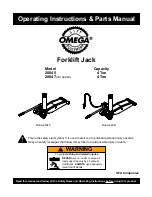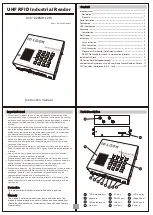
©
National Instruments Corporation
I-5
DIO 6533 User Manual
control signal summary (table), 4-7
description (table), 4-3
reversing pin assignments (note), 4-2
timing connections, 4-13
requirements for getting started, 1-4
RGND signal (table), 4-5
RTSI bus interface, 4-7 to 4-9
board and RTSI clocks, 4-8
RTSI triggers, 4-8
signal connections (figure), 4-9
S
Shottky diode, 4-15
signal connections, 4-1 to 4-16
data signal connections, 4-9 to 4-13
strobed I/O, 4-12 to 4-13
unstrobed I/O, 4-10 to 4-12
field wiring and termination, 4-14 to 4-16
I/O connector, 4-1 to 4-9
control signal summary, 4-7
pin assignments (table), 4-2
RTSI bus interface, 4-7 to 4-9
signal characteristics, 4-6
signal descriptions (table), 4-3 to 4-5
power connections, 4-14
pull-up and pull-down connections, 4-13
to 4-14
timing connections, 4-13
signal timing, 5-1 to 5-33
handshake timing, 5-4 to 5-33
8255 emulation, 5-4 to 5-7
burst mode, 5-27 to 5-33
leading-edge mode, 5-14 to 5-18
level-ACK mode, 5-9 to 5-14
long-pulse mode, 5-19 to 5-22
trailing-edge mode, 5-23 to 5-27
pattern generation timing, 5-1 to 5-4
example (figure), 5-1
overview, 5-1
request timing, 5-2 to 5-3
trigger timing, 5-3 to 5-4
software installation, 2-1
software programming choices, 1-4 to 1-6
National Instruments application
software, 1-4 to 1-5
NI-DAQ driver software, 1-5 to 1-6
register-level programming, 1-6
specifications
bus interfaces, A-8
digital I/O, A-1 to A-3
environment, A-9
physical, A-8
power requirement, A-8
strobed I/O, A-3 to A-7
handshaking, A-6 to A-7
pattern and change detection, A-7
pattern generation, A-3 to A-5
triggers
RTSI triggers, A-7
start and stop triggers, A-7
STOPTRIG<1..2> signal
control signal summary (table), 4-7
description (table), 4-4
timing connections, 4-13
strobed I/O, 3-5 to 3-13
data signal connections, 4-12 to 4-13
definition, 3-5
handshaking protocols, 3-8 to 3-10
8255 emulation, 3-9
burst mode, 3-10
comparison of protocols, 3-10 to 3-11
leading-edge pulse, 3-9
level ACK, 3-9
long pulse, 3-9
trailing-edge pulse, 3-9
handshaking transfer
controlling line polarities, 3-13
controlling startup sequence, 3-12
overview, 3-6


































